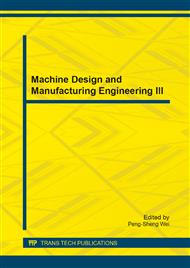p.354
p.358
p.362
p.368
p.376
p.382
p.386
p.393
p.397
Numerical Investigation on Supercavitating Phenomenon for the Variable-Lateral-Force Cavitator
Abstract:
A control scheme named the variable-lateral-force cavitator was proposed based on the theory of traditional variable-drag cavitator, the three-dimensional cavitating flow around the cavitator was investigated as well. It is confirmed that the drag, lift, lateral forces and cavity size of underwater vehicle can be effectively adjusted through the movements of control element of variable-lateral-force cavitator in both longitudinal and circumferential directions. In addition, an amount of pitching (or yawing) force equivalent to 30% of drag in magnitude will be produced when the displacement of control element on either side is inconsistent with each other, and the cavity section appears concave inwards simultaneously.
Info:
Periodical:
Pages:
376-381
Citation:
Online since:
July 2014
Keywords:
Price:
Сopyright:
© 2014 Trans Tech Publications Ltd. All Rights Reserved
Share:
Citation:


